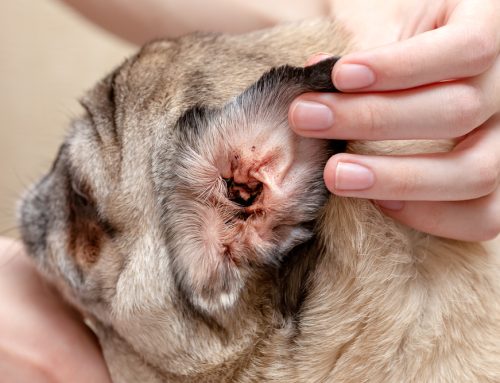September is Animal Pain Awareness Month, dedicated to educating and informing pet owners about pet pain. Pets often suffer in silence, so their owners need to be able to recognize their furry pals’ subtle pain signs. Unlike people, pets can’t verbalize their discomfort, so being vigilant and aware of behavioral and physical changes can allow you to identify pain early. Our Countryside Veterinary Hospital team provides the following information to help you understand pain signs in your furry friend.
Common pain signs in pets
Cats and dogs often hide pain and illness. However, you may notice specific health and behavior changes when your furry pal is in pain, including:
- Changes in behavior — Pain can cause a pet to behave in atypical ways such as decreased interest in play or exercise, aggression or irritability, avoidance of being handled, and withdrawal.
- Changes in eating and drinking habits — When a pet experiences chronic pain, they may refuse to eat or they may drink water more frequently or less often.
- Vocalization — Many pets in pain will become vocal by whining, howling, whimpering, or yelping.
- Altered grooming habits — Your pet may be in pain if they excessively lick or groom a specific body area. On the other hand, they may stop grooming, which can lead to matted fur and an unkempt coat.
- Postural changes — Pets in pain will sometimes walk with a hunched back or have difficulty lying down, jumping, or rising.
- Physical signs — Pet owners often see visible or physical pain signs in their furry friends, including swelling, inflammation, wounds, or injuries.
Pain causes in pets
Pets’ pain can result from various underlying issues. Identifying the cause is crucial for effective treatment and management. Pets’ pain can stem from various causes, including:
- Trauma or injury such as fractures, wounds, or muscle strains
- Orthopedic issues, including arthritis, hip dysplasia, or spinal problems
- Dental problems
- Internal disorders such as pancreatitis, kidney disease, or gastrointestinal (GI) issues
- Cancer
- Infections, including abscesses, urinary tract infections (UTIs), or skin infections.
- Neurologic conditions such as disc disease, neuropathies, or nerve injuries
- Postsurgical pain
- Metabolic conditions
- Age-related degenerative changes
Pet pain prevention
Preventing and managing pets’ pain requires a combination of proactive care, regular veterinary exams, and effective pain relief strategies. Our team recommends the following preventive measures to minimize your furry friend’s pain:
- Annual wellness exams — Routine exams with our Countryside Veterinary Hospital veterinarian are critical to detect your pet’s early pain signs. During these exams, we will formulate a plan to manage your pet’s pain for increased mobility and to improve their quality of life.
- Healthy diet and weight management — Keeping your pet at a healthy weight can dramatically improve their comfort and mobility. Provide your pet with balanced nutrition and avoid overfeeding. Obesity can put a strain on your pet and exacerbate their pain and discomfort.
- Exercise and physical activity — Regular exercise can help your pet maintain joint health and mobility. Our team can tailor exercise options to your pet’s age and health condition.
- Dental care — To help prevent your pet from developing oral pain, we recommend regular at-home toothbrushing and annual professional dental cleanings to reduce plaque and tartar buildup, periodontal disease’s primary culprits.
Pain management strategies for pets

If our team has diagnosed a chronic condition in your pet, we offer the following effective methods to manage their pain and discomfort:
- Medications — Nonsteroidal anti-inflammatory drugs (NSAIDs) and pain relievers are often prescribed by our veterinarian to alleviate your pet’s pain.
- Physical therapy — Some pets benefit from physical rehabilitation, hydrotherapy, chiropractic care, laser therapy, or other alternative modalities for pain management.
- Comfort measures — At home, supportive care for your furry pal may include an orthopedic bed and ramps or steps to help them access furniture or assist them when getting into the car.
- Environmental modifications — To prevent falls, ensure your pet’s environment is safe and accessible. Put down rugs and floor runners for added traction and stability.
Recognizing and addressing pain in pets is a crucial pet ownership responsibility. By being observant, understanding the common causes, and implementing preventive measures and effective pain management strategies, you can help your pet live a comfortable and pain-free life. If you suspect your pet is in pain, contact our Countryside Veterinary Hospital team. We will take a proactive approach to your pet’s health that can significantly enhance their quality of life and well-being.








Leave A Comment